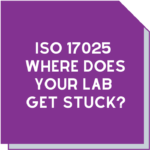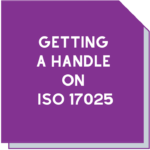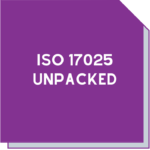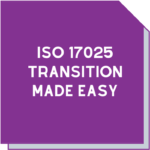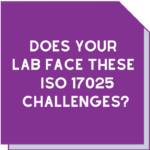November 2020 saw NATA accreditation transition to ISO/IEC 17025:2017
 November 2020 saw NATA accreditation transition to ISO/IEC 17025:2017.
November 2020 saw NATA accreditation transition to ISO/IEC 17025:2017.
While the majority of labs have already made alterations to their processes, we did a review of the changes in the new version.
Many organisations base their business decisions on information and results provided by laboratories. It is critical that the sampling, testing and calibration activities carried out by these laboratories are valid.
The ISO/IEC 17025 Standard promotes confidence in the ability of an accredited laboratory to provide consistent and technically valid results. A laboratory management system assists labs in the control of quality, administrative and technical activities. Since the 2017 version incorporates principles of ISO 9001, this means that there is now a much more risk based process approach in the laboratory. Labs must identify, select and address risks and opportunities. This will ensure business and quality objectives are being met.
The value of this is that the requirements of ISO/IEC 17025 are more performance based. This affords the laboratory more flexibility in implementation. It also reduces the amount of mandatory documentation. However, it’s crucial that laboratories understand the purpose of each requirement. They can use this to develop a risk-based approach to managing their activities.
This is not an exhaustive examination of the Standard and its clauses but will provide a concise overview of the changes in the 2017 version.
In a nutshell
The most important areas of change are:
- Risk based thinking
- The decision rule
- Sampling is included as a laboratory activity
- Focus on impartiality
- Additional methods of quality assurance
- Added requirements to the complaints process
- Consideration of IT and electronic-based systems
- Reference materials and consumables included as equipment
- Ensuring the competence of external providers
- Two options for recognition of the management system
In addition there are:
- Fewer mandatory procedures
- New requirements for the lab to take actions to address risks and opportunities.
The changes
Structural change
The two main clauses 4 and 5 of the previous version (Management and Technical Requirements) have been revised into the process approach favoured by ISO across five clauses (4 to 8).
There are two Annexes, one on Metrological Traceability and the other an explanation on the options to integrate an ISO 9001 management system.
ISO/IEC 17025 changes Clauses 4, 5, and 8 contain most of the Management Requirements from the 2005 standard.
General Requirements, particularly impartiality and confidentiality are in Clause 4.
Structural Requirements, i.e. the organisational structure of the lab are in Clause 5.
Management System Requirements procedures are in Clause 8.
Clauses 6 and 7 contain most of the Technical Requirements of the older standard, with a few Management Requirements thrown in. These technical clauses flow with the process of testing or calibration within a lab.
Clause 6 looks at Resource Requirements. These are the inputs that impact the lab’s ability to provide services consistently and competently to its clients
Clause 7 contains the Process Requirements. This follows through from receipt of the request for sampling, testing, or calibration right through to issuing of the report, any complaints and nonconformances.
From procedure-based to performance-based
In general, the ISO/IEC 17025:2017 version is more about risk and less about procedures. This gives labs the flexibility to develop their management system in a way that suits their business, as long as they can provide evidence that they have met the requirements and can consistently apply and follow their chosen process.
Impartiality, competence, and consistent operations
There is an increased focus on the ‘competence, impartiality and consistent operations of laboratories.’ In fact, impartiality is considered so important that it now has its own set of clauses right at the beginning. The focus on these three elements is designed to give added confidence in the ability of accredited labs to deliver valid results to their customers.
 Addition of sampling to lab activities
Addition of sampling to lab activities
The definition of a laboratory has been broadened in the new version of the standard.
Previously, it was applicable to testing and calibration laboratories, however the new version allows for organisations that conduct sampling for subsequent testing (at their own facilities or others) to also obtain accreditation for this activity.
Recognition of electronic-based systems and records
The world is a very different place since 2005, particularly in information technology. The 2017 version acknowledges this and recognises that processes, reports and records may now be electronic.
Alignment with ISO 9001
Clause 8, Management System Requirements, consists of Option A and Option B. This allows for labs that already have a certified ISO 9001 management system in place and can show that they consistently fulfil the requirements of clauses 4 to 7, to have inherently satisfied clause 8.
If this is not the case, a lab would select Option A and follow the specified requirements of clause 8.
Risk-based approach
There was a section on preventive action. Although this no longer exists, labs must still consider possible risks before a nonconformity occurs. In line with other quality management standards, labs must consider both risks and opportunities associated with activities and take appropriate action. This includes risks to impartiality.
Decision rule
Another new addition to the standard is the application of the decision rule to statements of conformity. The lab must get agreement from its customers, document and state its decision rule. This should be applied when determining if test results conform to a specification or standard. The decision rule must consider the level of risk of falsely accepting or rejecting a result before reporting whether it conforms to the specification or not. The decision rule is how clients can take account of measurement uncertainty in determining compliance to specifications.
This revision recognises that important decisions are made based on test results. Therefore, there is a greater focus on ensuring that laboratories can produce valid and reliable results.
Remember it’s not just about compliance or doing things to meet NATA accreditation. It’s about making your lab work better and smarter.
Contact us for support or advice. Email info@masmanagementsystems.com.au or phone Maree on 0411 540 709 for a confidential discussion.
You don’t have to do this alone!
Download this article ISO/IEC 17025 changes


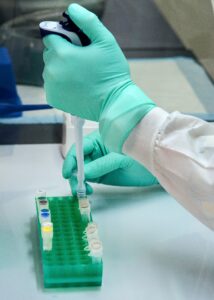 Addition of sampling to lab activities
Addition of sampling to lab activities